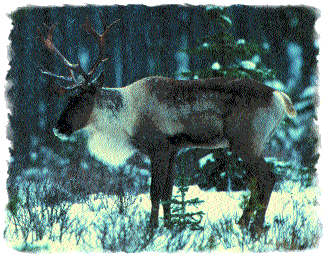 By Dennis Nicholls
By Dennis Nicholls
Sunrise was still a mountain ridge away, but the dawn was already beckoning me out of bed for a day's hike in the Selkirks.
"No," I said out loud to no one but myself. "I can't go. I've got too much work to do."
I stuck by those words for half a day, but by noon the clear blue sky lured me out of the office and the sun guided me into the mountains. I chose what I thought would be a quick and easy destination: Harrison Lake at the headwaters of Pack River. Turned out the drive to the trailhead was longer and more difficult than the hike itself.
It also turned out that half of north Idaho had been drawn into the mountains by the sky and sun, and the majority of them had selected Harrison Lake as their destination, too. My fondness for being alone in the woods led me up the mountainside north of the lake to get away from the crowds enjoying a classic summer day in the high country.
Though their noise reverberated throughout the basin, all conscious thought of the other people frolicking among the boulders and along the lakeshore ceased when the movements of a feeding animal caught my attention. I crouched low and began to sneak from one clump of alpine fir to another in order to get a closer look. And the closer I got, the less I could believe my eyes.
Belly deep in skunkbrush and rhododendrons a mere 40 yards away, a fantastic bull woodland caribou contentedly browsed as though nothing in the world could possibly be of any concern to him. Undetected, I watched his every move through binoculars in awestruck silence. After half an hour, I quietly left so as not to disturb the magnificent creature that had rewarded my instinct to obey orders from the sky and sun to go for a hike that afternoon last summer.
It's quite likely the woodland caribou (Rangifer tarandus caribou) is the rarest mammal in the continental United States today. An animal that once roamed coniferous forests in states along the Canadian border in New England, adjacent to the Great Lakes and in the rugged wilds of the Pacific Northwest, the caribou is now confined to one small area in the Selkirk Mountains of northern Idaho and northeastern Washington.
In 1984, the Selkirk population of woodland caribou was listed as endangered under the Endangered Species Act. Though it's probable they have never been abundant in the lower 48, by that time their numbers had dwindled to less than 30 animals anywhere south of Canada.
The U.S. Fish and Wildlife Service developed a recovery plan for the Selkirk caribou, as required by the ESA, that began with a population augmentation project. Between 1987 and 1990, 60 animals were translocated from central British Columbia to Ball Creek northwest of Bonners Ferry. The effort resulted in the establishment of a new herd in the Selkirks.
The surviving caribou at the time of the ESA listing were known as the Stagleap herd and primarily inhabited country north of the border. Some of the released animals moved north and ultimately joined that herd, but others stayed near the release site and formed what became known as the Two Mouth Lakes herd. Two Mouth Lakes are located just two miles north of Harrison Lake and the site of the encounter described above.
Of the 60 animals that were released up until 1990, at least 36 of them were dead by 1997 from a variety of causes. The population held stable for several years from 45 to 51 animals between the two herds, but in 1996, the winter census counted only 39 caribou.
The state of Washington joined in the recovery effort by transplanting 32 caribou over a two-year period from 1996 to 1997. But of 10 animals that were radio-marked in the spring of '97, five were dead within seven months. Through the decade of the '90s, ongoing studies indicated survival and reproductive rates were too low to sustain the herds naturally, so augmentation has been necessary in order to keep alive hope for a self-supporting population of woodland caribou in the backcountry of the Selkirk Mountains.
Caribou resources
For more information about caribou in general and the recovery effort in the Selkirks, visit these websites:
http://www.wa.gov/wdfw/wlm/research/caribou/caribou.htm
www.raysweb.net/specialplaces/pages/caribou.html
http://ecos.fws.gov/servlet/SpeciesProfile?spcode=A088
A couple of books about caribou include A Caribou Alphabet by Mary Beth Owens and the children's book, Caribou Country, an "Adventures of Ranger Rick" publication about the rescue of a woodland caribou and the discovery that these animals are being protected and studied in the mountains of North Idaho.